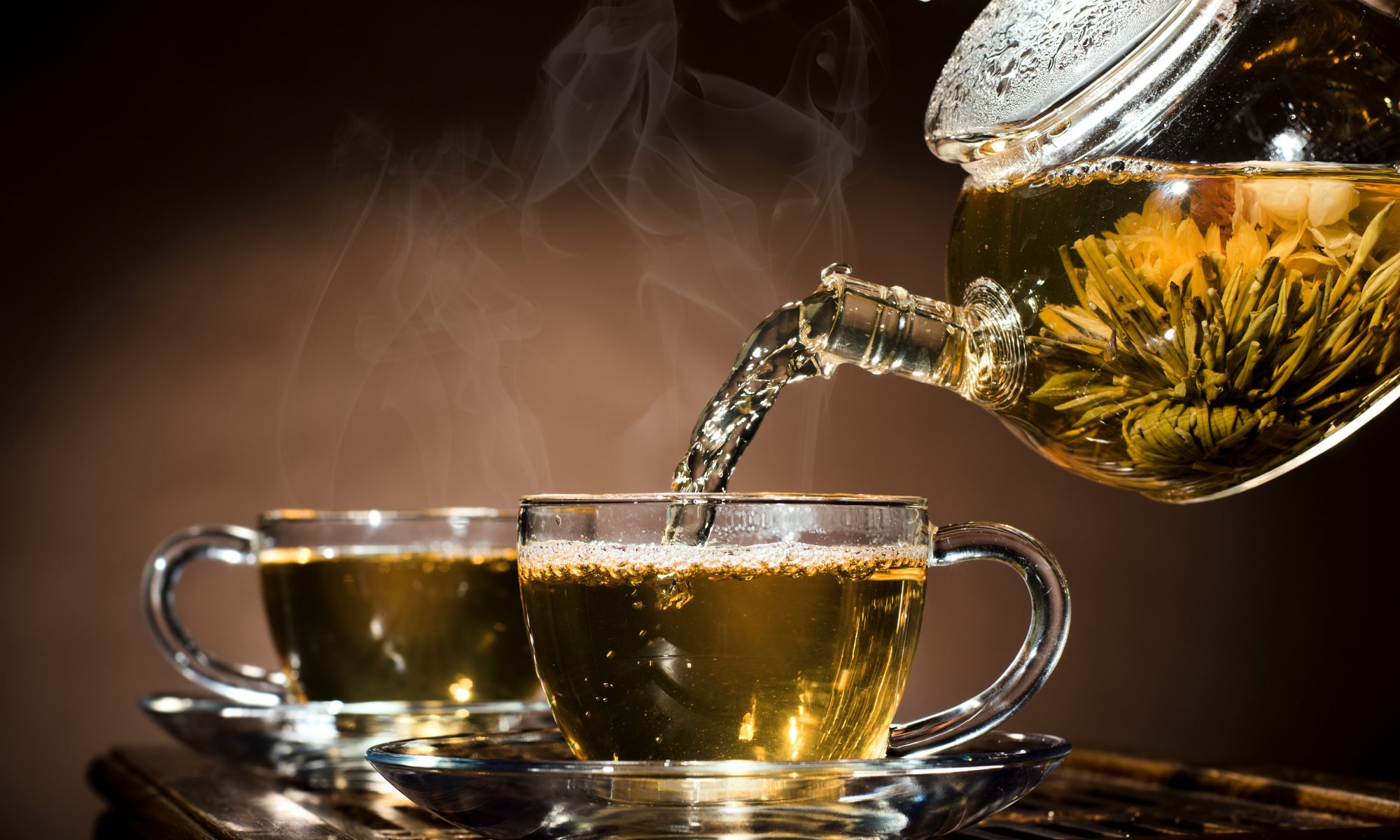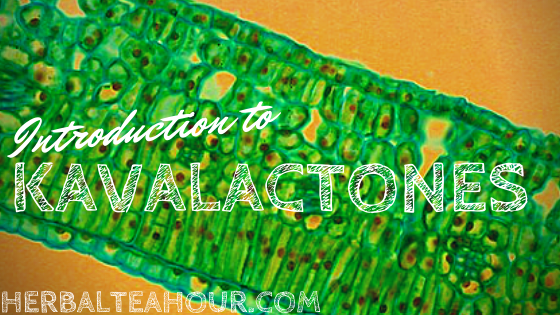KAVALACTONES
Skip Ahead To:
As people are becoming more familiar with Kava, they are beginning to come across references to Kavalactones with greater frequency. Kavalactones, after all, are the “active” ingredient that gives Kava the ability to create the “Kava High” that many Kava enthusiasts are seeking. You’ll want to take a look at HTH’s Ultimate Guide to Kava Kava before digging more deeply into this Kavalactones article – it will help make sure you have the necessary background information and context for understanding this post. After that, its time to dig in and and answer the question – What are Kavalactones and why do they matter? Let’s get started.
Speak with your Doctor Prior to Using Kava

First, as an Amazon Associate, I earn from qualifying purchases.
Please be advised that The Food and Drug Administration has not evaluated this HerbalTeaHour.com post. You need to know that Kava Kava is not intended to diagnose, treat, cure or prevent any disease. It is necessary to consult a health or medical professional prior to taking any form of Kava – especially if you are pregnant, planning to become pregnant, nursing or taking prescription medications. Some medications can be inhibited by Kava, so you’ll need to check with your doctor. Never take Kava with alcohol. Kava should not be consumed by those under 18 years of age. Kava should not be taken without first consulting your doctor, period.
KAVALACTONES: GUIDE
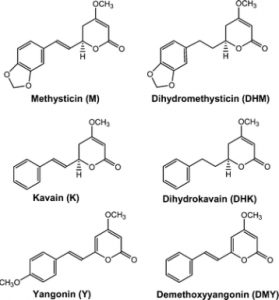
Please note: This post contains affiliate links. An affiliate link means that we may earn advertising/referral fees if you make a purchase through our links.
More people are becoming exposed to Kava every day. We’ve noticed an uptick in readers asking us about the active ingredients in Kava. In short, what makes Kava, Kava? This HerbalTeaHour.com article contains important information about the active ingredient in Kava – known by its scientific name of “Kavalactones”.
We’ve organized this article into a number of separate categories in an effort to make it easy to follow. We’ve begun with a short post about Kava, in general, so that you can familiarize yourself with this plant prior to taking a dive into the information about its microscopic contents. Next, we go over some of the basics of Kavalactones, where we dive into a short discussion about the 6 molecular structure associated with Kava. Next, we’ve added a short write up on the effect of Kavalactones on the human body before moving to a short story about our own experience with consuming Kavalactones (in the form of Kava Tea).
What is Kava (the Source of Kavalactones)?
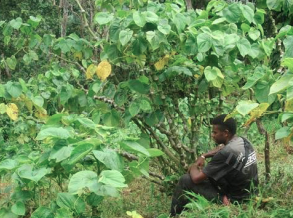
Kava is best described as a plant or small shrub. It has traditionally been found in the Pacific Islands (most pointing to its origins as either Hawaii or Fiji). Natives of these two islands have used Kava for centuries and for many different purposes. Kava is used in cultural or social undertakings or events, for religious ceremonies, and also for its alleged medicinal attributes. Many consume Kava in one of three primary ways: Kava Tea, Kava Pills, or Kava Root Powder each of which has been thoroughly written about by HerbalTeaHour.com
Kava, like any plant, is made up of various molecular “constituents”. The term “constituent” is another word for a component or building block. The constituents of Kava have been thoroughly researched, with many suggesting that the “psychoactive” components of the Kava plant are the Kavalactones. Most Kavalactones are found in the stems and roots of the Kava plant. Kava enthusiasts have arrived at a number of different techniques to isolate and consume the Kavalactones and, more often than not, are doing so in search of the Kava Kava High.
Kavalactones – The Basics
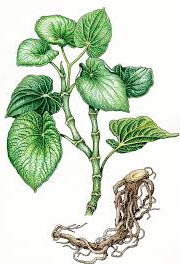
As earlier explained, most Kava enthusiasts elect to consume Kava because of its active ingredients and their alleged psychoactive effects. Some of the molecular buildings blocks grouped into the Kavalactone category are called kavain, dihydromethysticin, dihydrokavain, methysticin, and yangonin.
When consumed, the Kavalactones are alleged to manifest in a number of separate impacts upon humans. The impact being sought is typically that of a “psychoactive” or “psychotropic” nature. Remember, these two terms are generally defined to mean that a resulting change within a person’s mental state occurs due to the impact of the source on the way the brain and nervous system function, often times resulting in the intoxication or “high” being sought by the user.
Users are known to turn to Kava (or, more accurately, its Kavalactones) because of reported beneficial impacts upon any number of different wellness conditions. The two conditions most generally targeted by those consuming Kava are depression and anxiety. Specifically, many users report that continual, low dosage ingestion of Kava has aided in anxiety reduction and indirectly beneficially impacted their sleep patterns.
Kavalactones – Kava Dosage
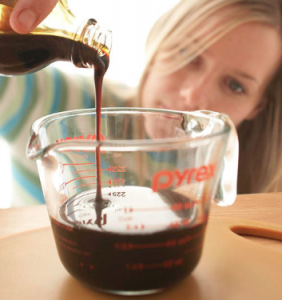
Any time you are consuming a product with a psychoactive property, it is very important that you consult with your doctor about the proper amount to ingest. There is no difference when experimenting with Kava Dosage. Several researches have concluded that Kavalactone ingestion should be limited to no more than 250mg per day.
It is our experience that most Kava Teas on the market (on a per tea bag basis) contain roughly 50mg to 75mg per bag. Do not let this alarm you. We are always very cautious to suggest that our readers start very, very small when experimenting with Kavalactones, and work their way up from there.
For instance, if you were to start at the 250mg per day mark, and notice an impact upon your body or mood, you might be inclined to think that such an amount is the proper dosage for you. The reality, however, could be quite the opposite. It may very well be the case that you are sufficiently impacted by a dosage more in line with the 75mg per day amount. By starting small, you give yourself a chance to realize this. Starting big, however, and you’ll miss your chance and may even put yourself in danger (as discussed below).
Kavalactones – The Risks
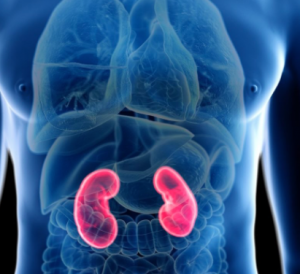
Most of us are fortunate to be born with two functioning kidneys. In fact, research suggests that you are perfectly capable of living a healthy life with only one kidney. Aside from these beneficial circumstances, kidneys are an absolutely critical part of the body and we need to make sure to protect them at all costs. Think of your kidney as somewhat of a filter for your body. After all, the function of your kidney is to remove waste or excess water from your blood stream, prior to sending these remnants to your bladder as urine, which is then expelled from your body.
Some research has linked the ingestion of Kava (or, more accurately, the Kavalactones contained within the Kava) to having a detrimental impact upon your kidneys. In fact, the United States Food and Drug Administration and even the Centers for Disease Control and Prevention have expressed concerns about liver and kidney toxicity, each tied to the ingestion of kavalactones. Why?
The answer is subject to evolving debate. Some believe that Kavalactones are metabolized (broken down by your body) by certain liver enzymes that are also associated with metabolizing other drugs (the drugs you intend to take for medical conditions) and that the Kavalactones interfere with these enzymes. This interference harms their effectiveness in terms of metabolizing such other drugs. The result of this is that the drugs you are intending to take may, over time (although there is no agreement on how long of time), build up and cause damage your liver. Other researches tie the damage to the fact that users sometimes foolishly combine their ingestion of Kavalactones with the consumption of Alcohol. As we earlier stated, you should never, never do this.
Two Primary Sources of Kavalactones
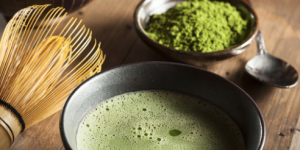
There are a number of different kinds of powder from the roots and stems of the kava plant, the source of the Kavalactones, on the market today. After all, Kava is legal in the United States. We’ve included a link to one of our favorite kinds below:
(Commissions Earned)
Others seeking to avail themselves to the alleged benefits of Kavalactones might be better suited trying out Kava Tea. With Kava Tea, most of the work is done for you, with the tea bags containing pre-apportioned amounts of Kava (and thus, Kavalactones).
(Commissions Earned)
Kava Tea can be somewhat bitter. In our own experience, we’ve elected to add sugar or cinnamon to the tea after it has been brewed (and allowed to steep). This cuts down on the somewhat bitter taste of Kava without completely drowning out the earthy taste which is, at least in our opinion, part of the Kava drinking process!
Kavalactones: My Experience
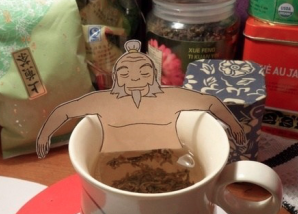
I tend to stick to kava tea when seeking to consume kavalactones. While I have used Kava root powder to make Kava/Milk blends, and have also used it when creating Kava pills, I like to let someone else do the leg work for me so that I can just enjoy the benefits. What’s more, I prefer the Kava tea because of the experience. After all, I’ll partake in just about any kind of herbal tea consumption that I can get my hands on!
For safety purposes, I always limit myself to one or, maybe on the rarest of occasions, two tea bags. This amount keeps me well bellow the suggested Kavalactone limit per day. When drinking the kava tea, I tend to notice an increased sense of relaxation and calm wash over me within the first 5 or 10 minutes. Now, I typically sense this kind of impact when I consume many different kinds of herbal tea, not just Kava. However, as I have become more versed in Kava consumption, I can differentiate between the affect of Kava and that of other herbal teas. By no means am I “high” like I might be when taking synthetic drugs or binge drinking alcohol, but there is a resulting impact. Perhaps the high would be more prominent if I ingested more kavalactones, but I like to play on the safe side!
KAVALACTONES: CONCLUSION
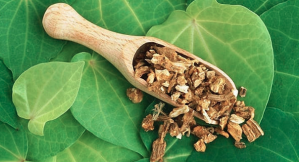
We’ve written this post about Kavalactones in an effort to create a helpful and free resource for this herbal tea community. It is clear that Kavalactones can have a psychoactive impact upon its human user – after all, this is the very result sough by most whom consume Kava. What is also clear is that excess ingestion of Kavalactones can results in serious damage to your kidneys or liver.
It is important to stay very up to date on the evolving field of Kavalactone related research and keep yourself informed of the potential risks! If you have any questions about this article, we’d love for you to post in the comments section below. We read and reply to all comments and believe that the comment board serves as a great free resource for herbal tea enthusiasts of all levels of experience!
Kavalactones: Comments
Did you know that Kavalactones are the “active” ingredient in Kava? Did you know that they can have psychoactive impacts? What are your feelings about the suggested levels of dosage associated with Kavalactones? What level of dosage do you first experience the Kava High? What strategies do you take to make sure to protect yourself from the potential harmful results of excessive consumption of Kavalactones? Please make sure to post below. We love interacting with this herbal tea community and are certain that our discussions serve the benefit of the greater herbal tea readership!
HerbalTeaHour.com is an herbal tea community that truly values transparency and disclosures. We want to be very clear about one thing. In addition to being herbal tea enthusiasts, we do participate in the Amazon Affiliate program. As an Amazon Associate we earn from qualifying purchases.
